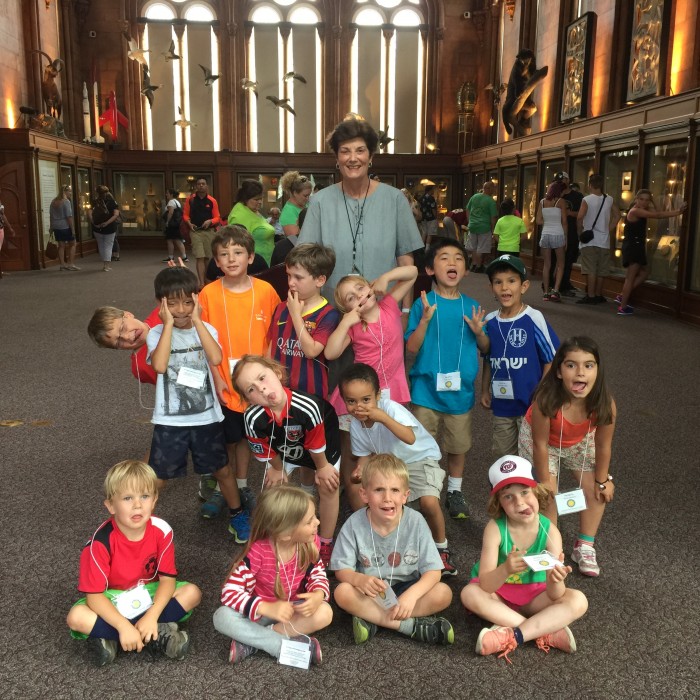Amy and the owls: Super cool!
At the Smithsonian, you’re always prepared for “other duties as assigned.” But some duties you can never be fully prepared for.
A few weeks ago, I bumped into Freddie Adelman, director of the Smithsonian Associates, and Brigitte Blachere, who is in charge of the Smithsonian Summer Camp program. After exchanging pleasantries, I asked if there was anything I could do to help out with the summer camp program. As a senior historic preservation specialist in the Architectural History and Historic Preservation Office, perhaps I could give a building tour or tell a tale or two.
It dawned on me that the one thing I will most likely be remembered for after almost 40 years at the Institution will not be any books or publications or my contributions to historic preservation, but the assignment I had in 1977 to feed a pair of barn owls housed in the Smithsonian Castle. Maybe the campers would be more interested in that experience than a discussion of medieval revival architecture. Even after all this time, I still get asked to participate in oral histories, interviews for apps, lectures and Q&As about my experience with the barn owls.
Dillon Ripley, Secretary of the institution at the time, read that there were two owls who made one of the Castle towers their home in the mid-19th century. As an ornithologist, Mr. Ripley thought that the installation of a pair of owls would enhance the Victorian ambiance of the Castle, and so in 1977 two owls were brought to the Castle by the National Zoo. I fed these owls for several months, climbing a five-story ladder while wearing a jumpsuit and a motorcycle helmet (in case of a close encounter of the owl kind) and throwing open a trap door in order to deposit dead rats or mice and water to their tower lair. I even kept an owl diary so Mr. Ripley would know how they were faring. You can read more about my adventures and the fate of the owls at “Other Duties as Assigned” in the Smithsonian Preservation Quarterly Fall 1993 issue. (Spoiler alert: The owls flew away.)

Amy Ballard carries a dead rat to owls living in the northwest tower of the castle in 1977. (Photo by Richard Hofmeister)
As I told the story of the owls to the children attending the Smithsonian Summer Camp (which has been entertaining and educating youngsters for 46 years), I worried that they would be bored. I was very surprised that they sat still for half an hour while I regaled them with the story from start to finish. They asked many questions (“Are the windows owl-proofed?” “Does a king live in the Castle?”) and got a look at the “owl tower” from inside and outside. They pronounced their tour “super cool!”
After this experience, I’ve come to the realization that if the story of “Amy and the Owls” is the lasting legacy of my years at the Smithsonian, it’s one I should embrace. It’s a story that makes people of all ages smile and it could only have happened at the Smithsonian.
Posted: 7 August 2015
-
Categories:
Education, Access & Outreach , Feature Stories , History and Culture




